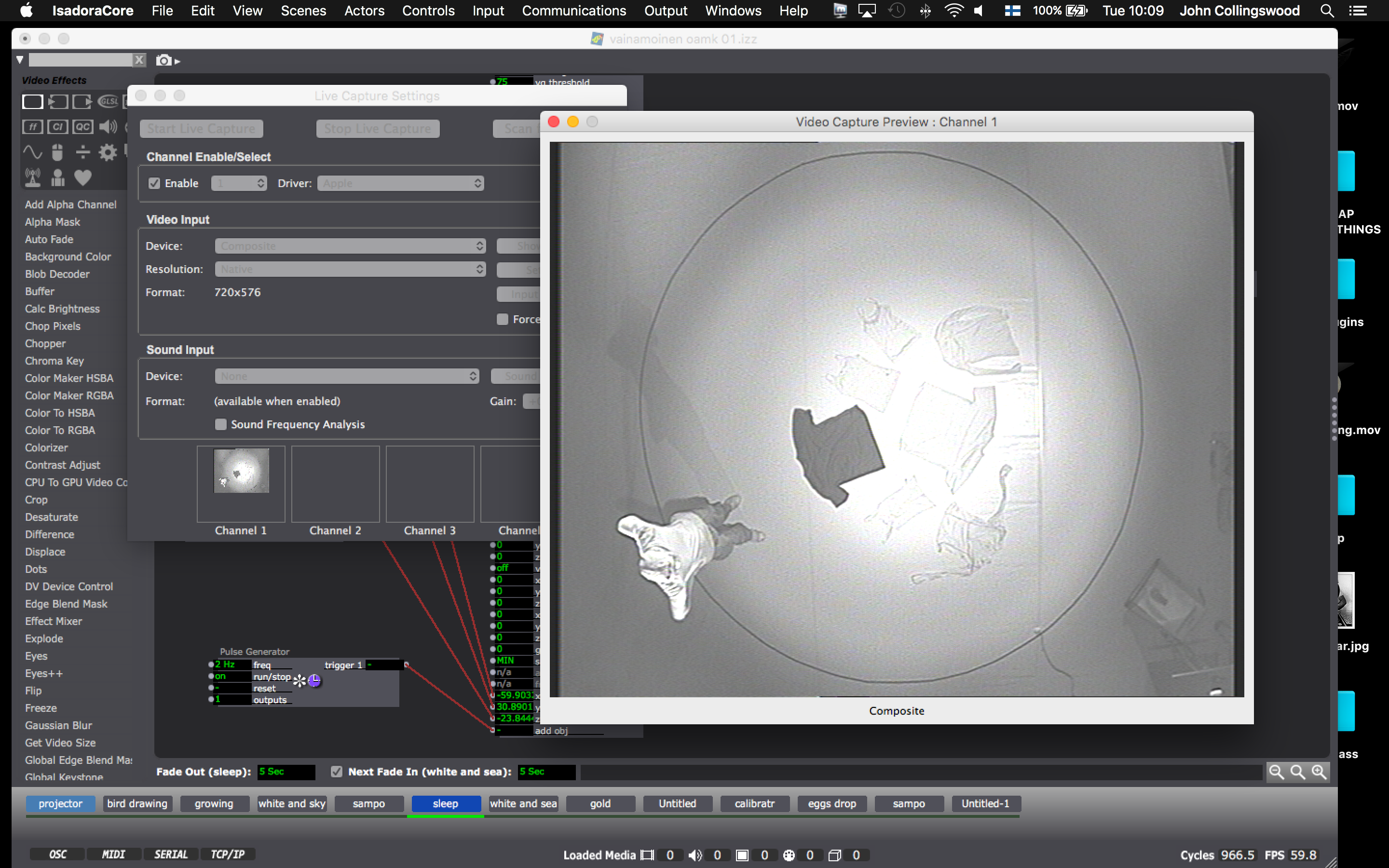Infrared absorbtion
-
Does anybody have any idea as to why one piece of clothing absorbs IR and appears black, whereas a load of similar items reflect the IR and appear white? The T shirt that absorbs beautifully is 85% cotton, 15% viscose, dyed a dark grey marl. (the technician's green cotton trousers are also absorbing quite nicely) (my Isadora t-shirt reflects)
If we can work out how to create an IR absorbant costume, that will solve all our tracking problems and make me very happy.
-
Try spaying the shirt with a clear spray paint...it maybe be enought to reflect the IR light to that camera.
-
This is a total mystery that is based on both the fabric itself and the dyes that are used. As far as I know, the only way to determine this is by trial and error. Great to have a picture of this though... I discussed this issue during my workshop on IR tracking at the #IzzyWerkstatt.
Best,Mark -
Every color of dye is made with different elements.
Some use metals such as chromium, others plant extracts..Most are carried into the fibre of the garment by salts. These salts also vary (and this is just for natural fibers. I use sublimation printing on polyester often for my work, and I have found an unusual range of colors that become UV reactive)As Mark has suggested trial and error may be the only way forward with this one, unless you want to get a roll of undyed cotton, and carefully dye test swatches in different colors.Note, that bleaching the fibre may also have an effect. -
To get aelund this also think about different lighting. I know this is tricky from the top, but the thing you need to get is contrast. Where possible light the background or foreground only, this will help a lot. If you can use shutters and low angle lighting to light the floor, and make sure that any lighting from above does not have IR content. This way your floor (which seems to be reflective) will be bright and by not lighting the moving subjects you rent to track they will be black (or dark enough). Lighting the whole scene with IR will give these problems as there is not reborn contrast, even without the reflection problems tracking will be spotty. Preparing the contrast with fine controlled lighting will make it much easier.
-
Hi @Fred - I've used IR for a few shows and workshops, usually lighting the dancers with profiles on floorstands, shuttered off the floor, providing a lovely contrast.
The problem I'm having with this show, though, is that the audience (children) sits in a circle around the floor, so i have nowhere to light from. I can't put lanterns near the kids, and lighting over their heads only catches the top half of the dancer, so can't be used for tracking floor work.I've researched into thermal cameras, but that solution is going to be way over budget or have its own limitations (Flir One)I'm a bit stuck. I thought that toplighting with the right costume might be my only answer. -
Hhhmm, then this gets tricky. I also found consistently predicting IR reflectivity in customers is kind impossible. I once took battery powered I R lamps and a camera to the shops to test clothes. There are some 3M products that are super IR reflective, they are mostly tapes and strips for staying on clothing. If you don't need silhouettes then these can be helpful. Otherwise (I am guessing this is not possible), changing the floor to songbook that absorbs IR...
-
I was going to suggest treating the floor somehow as well.
-
yeah, it would be useful to find something that can create a 4.5m diameter circular floor/projection screen that absorbs IR, then make sure the costume reflects, but that's probably as difficult as the original option of making the costume out of a bunch of those absorby t-shirts.
Absorbing floor does have a distinct advantage though - at the end of the show I want to invite the kids onto the floor to play with a live drawing patch, and it seems that the majority of clothing will reflect IR. also we have the option of adding some of that 3M reflector into the costume for some special tracking/drawing effects.Any ideas how to get an IR absorbant white floor?cheers, john -
Something like this may help http://kmichemicals.com/proShow.aspx?CateId=212&Id=216
-
I remember using black duvetyne (molton) for to block reflection, we layed it on the floor and even used it for costumes. Maybe white duvetyne (molton) will work the opposite way if you are lucky. Easy to source and very tough.
-
thanks everyone. its a mission. white commando cloth glued to lino might be an option worth exploring.
i know a chap who works with industrial hyperspectral imaging cameras. i'll run these ideas past him, maybe he can help solve the problem. -
If you have the right connections, possibly military, you might find this article interesting on the treatment of textiles.
-
: ) - now i just need some indium tin oxide nanoparticles
-
Let me know when you source them. :^)